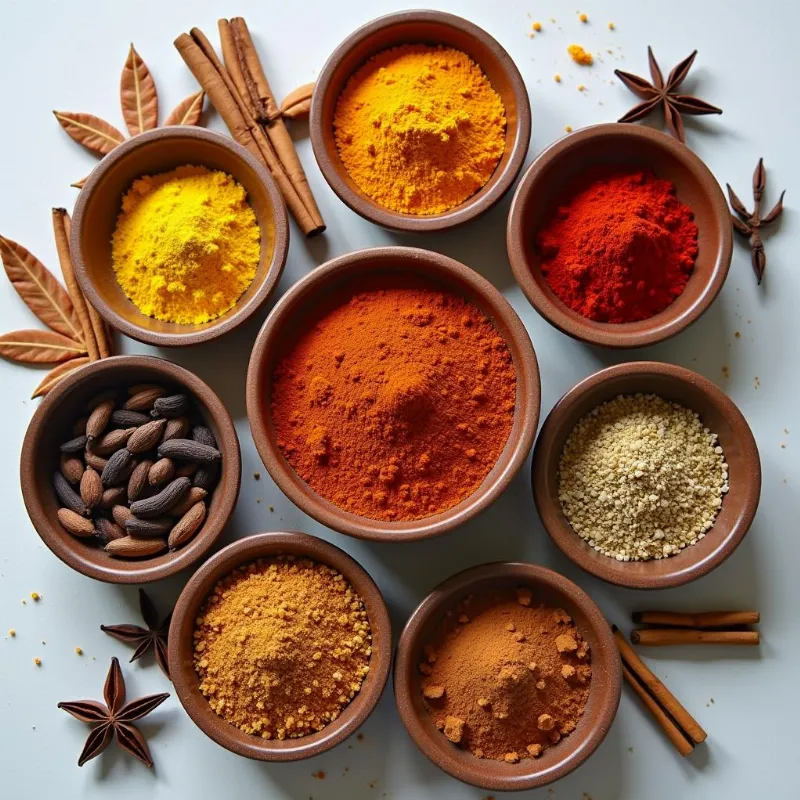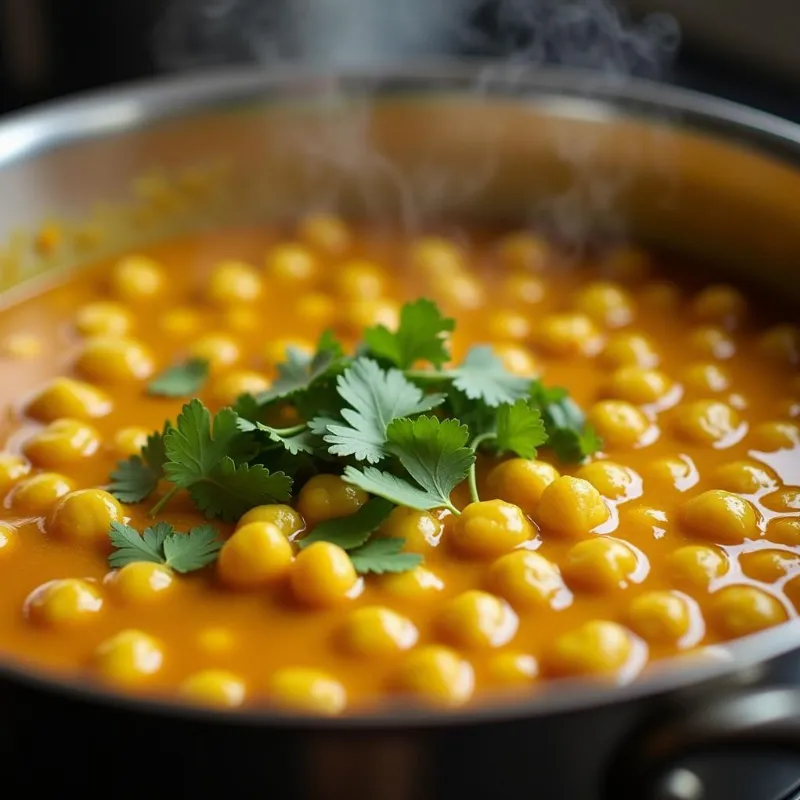Vegan Indian curry dishes offer an explosion of flavor and a symphony of textures that will tantalize your taste buds. These plant-based delights prove that you can enjoy the rich culinary heritage of India without compromising your ethical and dietary choices.
Exploring the World of Vegan Indian Curries
Indian cuisine is renowned for its masterful use of spices, and vegan curries are no exception. From the warming heat of chilies to the earthy aroma of cumin and the fragrant allure of garam masala, each spice plays a crucial role in creating a harmonious blend of flavors.
 A colorful array of spices commonly used in vegan Indian curries.
A colorful array of spices commonly used in vegan Indian curries.
Essential Ingredients for Vegan Indian Curries
Creating authentic vegan Indian curries at home starts with stocking your pantry with a few essential ingredients:
- Spices: Turmeric, cumin, coriander, garam masala, chili powder, ginger, and garlic are staples in most curry blends.
- Onions, Garlic, and Ginger: These aromatic ingredients form the flavor base of many curries.
- Tomatoes: Fresh or canned diced tomatoes add sweetness and acidity to the curry.
- Coconut Milk: Full-fat coconut milk creates a rich and creamy texture, balancing out the spices.
- Lentils, Chickpeas, or Tofu: These protein-rich ingredients add substance and texture to the curry.
- Vegetables: Cauliflower, potatoes, spinach, green beans, and peas are just a few examples of the many vegetables that can be used in curries.
A Simple and Delicious Vegan Chickpea Curry Recipe
This recipe is perfect for beginners looking to try their hand at vegan Indian cooking.
Ingredients:
- 1 tablespoon coconut oil
- 1 onion, chopped
- 2 cloves garlic, minced
- 1-inch piece ginger, grated
- 1 teaspoon turmeric powder
- 1 teaspoon cumin powder
- 1 teaspoon coriander powder
- 1/2 teaspoon chili powder
- 1/4 teaspoon garam masala
- 1 (14-ounce) can diced tomatoes
- 1 (14-ounce) can chickpeas, drained and rinsed
- 1/2 cup coconut milk
- Salt to taste
- Fresh cilantro, chopped, for garnish
Instructions:
- Heat the coconut oil in a large pot or Dutch oven over medium heat.
- Add the onion and cook until softened, about 5 minutes.
- Stir in the garlic and ginger and cook for 1 minute more.
- Add the turmeric, cumin, coriander, chili powder, and garam masala. Cook, stirring constantly, for 1 minute.
- Stir in the diced tomatoes, chickpeas, coconut milk, and salt.
- Bring to a boil, then reduce heat and simmer for 15 minutes, or until the flavors have melded.
- Garnish with fresh cilantro and serve with basmati rice or naan bread.
 A pot of vegan chickpea curry simmering on the stovetop.
A pot of vegan chickpea curry simmering on the stovetop.
“When making vegan Indian curries, don’t be afraid to experiment with different spice combinations to find your perfect balance of flavors,” advises renowned vegan chef, Priya Sharma. “Each spice brings its own unique character to the dish.”
Tips for Making the Best Vegan Indian Curries
- Toast the spices: Dry roasting whole spices before grinding them releases their essential oils, enhancing their flavor.
- Don’t rush the cooking process: Allowing the onions, garlic, and ginger to cook slowly over low heat will develop a deeper, more complex flavor base for your curry.
- Adjust the spice level: If you’re sensitive to heat, start with less chili powder and gradually add more to your liking.
- Add a touch of sweetness: A pinch of sugar or a teaspoon of maple syrup can help balance the acidity of the tomatoes and enhance the overall flavor.
Conclusion
Vegan Indian curry dishes offer a world of flavor possibilities, allowing you to explore the diverse and aromatic cuisine of India while adhering to a plant-based lifestyle. With a few essential ingredients and a little patience, you can create restaurant-quality curries in the comfort of your own home. So, gather your spices, chop your vegetables, and embark on a culinary journey that will tantalize your taste buds and nourish your body. For more vegan Indian food inspiration, check out our vegan indian food recipes.
FAQ
1. What can I use instead of coconut milk in vegan Indian curries?
You can substitute coconut milk with cashew cream, almond milk, or even vegetable broth for a lighter option.
2. Can I make vegan Indian curries in advance?
Yes, curries taste even better the next day as the flavors continue to develop. Store them in an airtight container in the refrigerator for up to 3 days.
3. What are some other protein options for vegan Indian curries?
Tofu, tempeh, seitan, lentils, and vegetables like cauliflower and potatoes are all excellent protein sources for vegan Indian curries.
4. What type of rice is best served with vegan Indian curries?
Basmati rice is the traditional accompaniment for Indian curries, but you can also use brown rice, quinoa, or naan bread.
5. Can I freeze leftover vegan Indian curry?
Yes, you can freeze leftover curry for up to 3 months. Thaw it overnight in the refrigerator and reheat it on the stovetop or in the microwave.
6. How can I make my vegan Indian curry spicier?
Add more chili powder, fresh chilies, or a pinch of cayenne pepper to increase the heat level.
7. What are some good side dishes to serve with vegan Indian curries?
Raita (yogurt and cucumber dip), chutney, papadums (thin, crispy lentil wafers), and vegetable pakoras (fritters) are all popular accompaniments for vegan Indian curries. If you’re new to vegan cooking, start with our vegan recipes for beginners.
